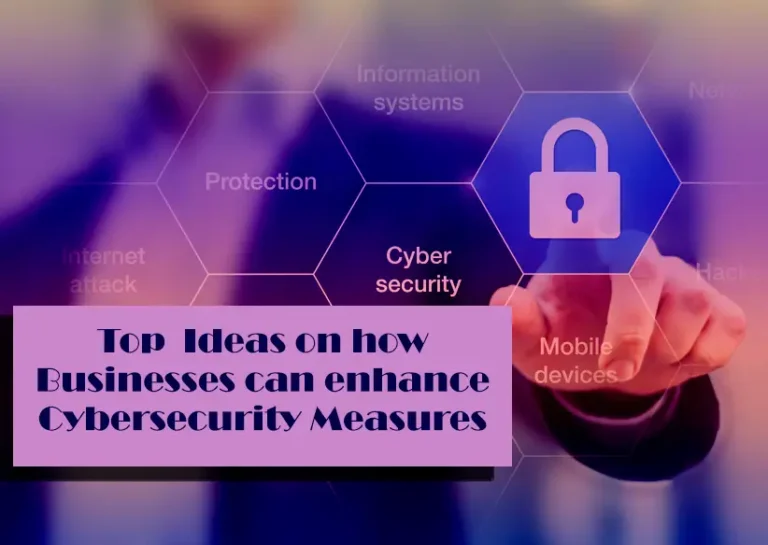Over the past few years, technology has advanced significantly and made our lives easier in every aspect. However, unfortunately, there is no denying that the risk of cybercrimes has also increased. Today, no business, whether small or large, is safe from cybercriminals. Some companies successfully identify cybersecurity attempts in the initial stages. In contrast, others are unaware of it until they experience the attack. Whatever the case is, the rise in cybersecurity threats has caused individuals and businesses to suffer from a never-ending day-to-day struggle to protect their valuable data.
Moreover, with every day passing, these criminals adopt more sophisticated and more ingenious ways to cause damage to security systems. However, the truth is there is no single method for cybercriminals to threaten or attack the system. While most cyber threats may occur due to financial motivations, some are for espionage. One such example is cybercriminals may penetrate the system, steal or block confidential data and information, and demand money.
Does the question arise what exactly cyber threat means? Well, to put it simply, cyber threat refers to the chances of experiencing possible cyberattacks. The hacker’s objective to attack the system may include stealing sensitive data and information, demand money, sabotage data, etc. The hackers might be any terrorist group, corporate spies, unhappy employees, or just any individual with a destructive cause.
Therefore, it is now more than ever necessary for individuals to pursue a career in cybersecurity threats to avoid themselves from such situations. The good news is that many public and private institutions offer different types of cyber security jobs to professionals who understand and can protect them from cyber threats and attacks. The various cybersecurity careers may include security engineers, security architects, information security analysts, etc. While cyber risks continue to grow over time, professionals must understand different types to tackle these threats. Below are some common cybersecurity threats in the present age:
MALWARE
The most common yet malicious type of cyberattack is malware. It is a type of software created by a hacker that penetrates the victim’s device without notice. Usually, when the victim clicks on a dangerous link or opens an email attachment, the risky program automatically installs on the device. The software can then silently monitor all the actions taken by the victim on the device. As a result, it can either cause disruption or damage to the network or transfer sensitive data from the victim’s device to the attacker’s system.
PHISHING
Phishing is a type of social engineering cybersecurity attack, involves tricking a user into clicking and disclosing sensitive information. The downside of this cyber threat is that hackers fool users that a particular email may be from a legitimate source. Unfortunately, it is pretty complex for the victims to distinguish these scam emails from genuine ones. Consequently, the victim usually shares confidential data by clicking on the link that takes the user to a website that isn’t legitimate. As a result, the victim typically gets trapped into sharing confidential information on the website, such as their credit card information. Some common phishing types include spear phishing, vishing, smishing, clone phishing, evil twin phishing, etc.
MAN IN THE MIDDLE ATTACK
The man-in-the-middle (MitM) or eavesdropping attack is one of the oldest types of cybersecurity threats. MitM attack involves three parties; two legitimately communicators and one hacker. It usually takes place when the hacker positions in a conversation between the two legitimate parties. For instance, public internet connections are more insecure than private. Therefore, when the user requests the webserver for session activation, the hacker often impersonates as one of the two: client or remote server. That way, cyber-criminal can install malware software and steal sensitive information from both parties. Some typical practices of MitM attacks involve IP spoofing, session hijacking, SSL stripping, eavesdropping, or reply attacks. The users can protect themselves from eavesdropping attacks by avoiding connecting to insecure public Wi-Fi connections. Also, they must ensure the website they are using is HTTPS instead of HTTP.
SQL INJECTION
One of the biggest threats to web application security is SQL (Structured Query Language) injection or simply SQLI. Various web applications employ different SQL databases such as MySQL, Oracle, IBM db2, MariaDB, etc. In this cyber threat, the cybercriminal attempts to access back-end databases by injecting malicious SQL codes. Once SQL injection is successful, an attacker can interfere with the queries by reading, modifying, or deleting the sensitive data stored in the database. Many websites stores their customers’ confidential data such as usernames, email addresses, passwords, credit card details, etc. Due to this cyber intrusion, a cybercriminal can threaten both users and the organization about stealing the data and selling it on the dark web pages.
DENIAL OF SERVICE (DoS)
In this cyberattack, the hacker aims at making a computer machine or network inaccessible to its user. The DoS cyber-attack floods the target system by overwhelming its traffic and making it non-functional for its users. The attacker employs hundreds and thousands of compromised devices with different IPs to request website access and hence wears out the website bandwidth. Due to many varying IP devices in this cybersecurity attack, it is relatively complex to identify the attack source. Cybercriminals often use DoS attacks together with different types of cyber threats. These hackers confuse system security administrators with DoS while they focus on stealing or damaging the data.
CONCLUSION
With the development of machine learning, artificial intelligence, or cloud computing, the detection of cyber attempts is relatively complex. Moreover, the emergence of the COVID-19 pandemic has caused many organizations to work remotely. As a result, these organizations and their employees are more vulnerable to cyber threats. The good news is these cyberattacks are preventable if users take the necessary measure adequately. It is to keep in mind that the motivation behind these malicious cyberattacks may differ from case to case. However, according to Verizon 2020 Data Breach Investigation Report, the purpose of 86% of cyber breaches was financial motivation.
Also read about: Cyber Security – Need a road of awareness!




